Afghan Kush Auto Cannabis Strain Week-by-Week Guide

- 1. Grow specifications
- 2. Grow set up
- 3. Germination and seedling stage | week 1
- 4. Early veg | weeks 2-3
- 5. Mid veg | weeks 4-5
- 6. Transition (pre-flower) | week 6
- 7. Early flower | weeks 7-8
- 8. Mid flower (bulk phase) | weeks 9-10
- 9. Ripening and harvest | week 11
- 10. Yield and smoke report
- 11. Afghan kush auto cannabis strain grow guide faqs
- 12. In conclusion
We couldn’t but include Afghan Kush Auto in our collection of autoflower seeds because this old-school weed strain has that unique hash taste that only heirloom Afghani genetics possess. Besides, it’s amazingly tolerant of cold, exceptionally fast, and very potent. Medical patients praise this classic as the ultimate cannabinoid-based painkiller.
This hardy and easy-to-grow strain will give no trouble even to first-time growers, but it wouldn’t hurt looking at other people’s experience with growing Afghan Kush Auto. Read our short but exhaustive week-by-week guide to get some tips and glean some hacks. Hopefully, it’ll help you grow this autoflower like a pro.
1. Grow Specifications
With 85% of Indica genes, Afghan Kush Auto is one of the purest Indica strains in our collection. The plant’s incredible flowering speed of only 8–9 weeks from seed to harvest makes it a perfect choice for cool and short summers or for those growers who are too impatient for a long wait. Most cultivars don’t grow tall, reaching 60–90 cm (24–35 inches) by the end of their life cycle.
Despite such compact size, Afghan Kush Auto is capable of bringing a respectable 400–500 gr/m2 (1.3–1.6 oz/ft2), especially if you grow in a SOG setup. Outdoors, these diminutive Christmas trees yield 50–130g (2–4 oz) per plant. Needless to say, the buds are super sticky, dense, and heavy, and their earthy, spicy, and sweet flavor is exactly the combination that hash-lovers seek. And 22% THC makes the smoke as potent as hell.

2. Grow Set Up
For our Afghan Kush Autoflower week-by-week guide, we’ve chosen JohnnyBlaze who keeps churning out one great report after another. In one of his latest grow cycles, Afghan Kush shared a 1m2 area with three other autos. They all received light from just one 150W Mars Hydro TS 1000 LED, and their combined yield far surpassed the one-gram-per-watt target.
The grower used the hard-to-master but very efficient growing medium (85% coco + 15% perlite) and kept his autoflowers on a rich diet of organic and synthetic fertilizers and supplements, mostly by Advanced Nutrients.
| Grow Space: | 1 m2 (10.76 ft2) | Pot Size: | 11 l (2.91 gal) |
|---|---|---|---|
| Seed to Harvest: | 11 weeks | Medium: | 100% coco coir |
| Flowering: | 6 weeks | Nutrients: | Synthetic/Organic |
| Light Cycle: | 20/4 | pH Levels: | 6.2 |
| Light Type: | LED | Day Temperature: | 24°C (75°F) |
| Watts Used: | 150 | Humidity: | 60% |
3. Germination And Seedling Stage | Week 1
There are many different ways to germinate cannabis seeds, and this grower used probably the most simple one—planting directly in the medium. It was a success as the bean sprouted in 3 days. The sprout was kept in an 11 l (2.91-gallon) smart pot from GardenMate and at a distance of 60 cm (23.6“) from the light.
| Plant Height: | 2“ (5 cm) | Humidity: | 60% |
|---|---|---|---|
| Distance to Light: | 23.6“ (60 cm) | Water per Day: | 0.03 gal (0.1 l) |
| Day Temp: | 75°F (24°C) | pH: | 6.2 |
| Night Temp: | 66°F (19°C) | TDS: | 300 ppm |
We recommend every beginner grower not lower the light too close to the seedling because too much light may lead to stress and stunted growth. On the other hand, don’t let your seedling stretch to the point that she topples over. Adjust the light distance so that the seedling looks neither spindly nor stunted.
In the first week, a young plant doesn’t need much feeding. You can give her only fresh water when growing in soil, but in coco, very small doses of nutrients for the vegetative phase are necessary. It’s also a great idea to populate the medium with live microbes (bacteria and fungi) because they’ll later help your cannabis break down and absorb nutrients.
This is what this grower did, using the following Advanced Nutrients products:
- Tarantula, to make little creatures in the root zone do all the heavy lifting,
- Voodoo Juice, to enhance the branching of the roots, their density and mass,
- Piranha, to provide beneficial fungi which bond to roots and extend them.
In the photo below you may notice that there’s no perlite visible in the medium. It’s because the grower used only 15% of it (to 85% of coco). Usually, people add more because pure coco tends to retain moisture which can lead to overwatering issues. With a greater perlite percentage, the medium retains less water but becomes more breathable.
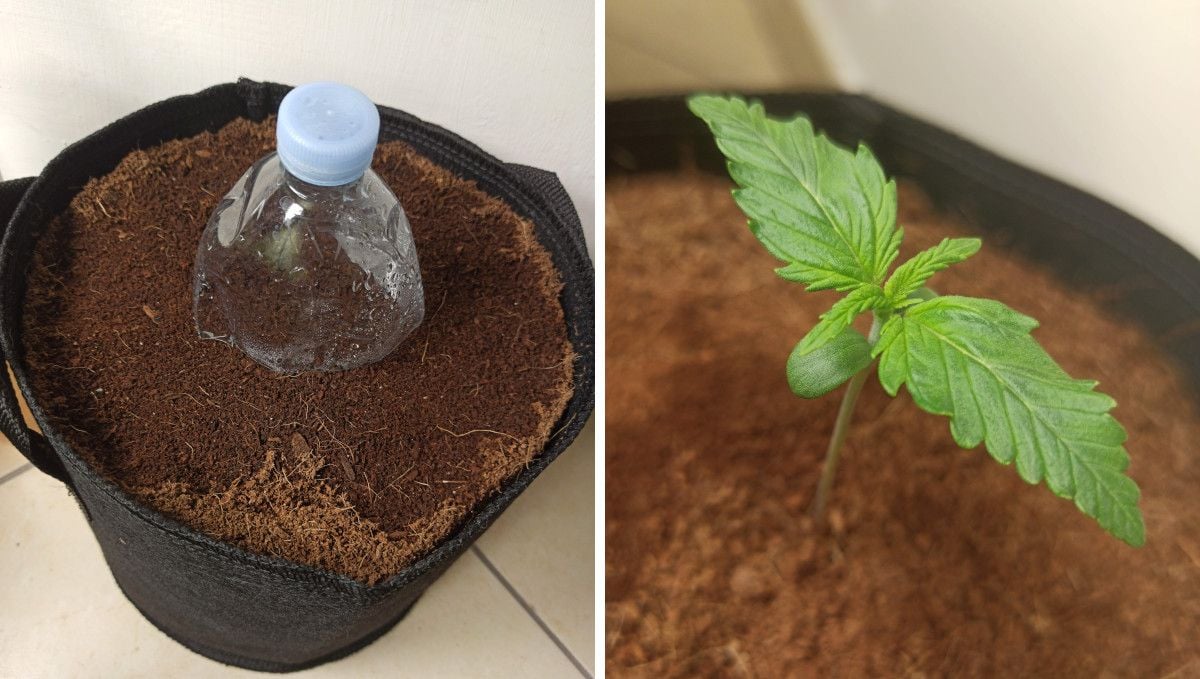
It’s up to you to decide on the proper coco/perlite ratio. If you’re okay with more frequent watering, more perlite will probably lead to healthier plants and better yields.
Another thing that you may notice in the photo is the humidity dome. Cannabis seedlings love high RH. If you can’t raise it in the whole room, raise it locally with something as simple as half of a plastic bottle.
4. Early Veg | Weeks 2-3
This point in the timeline requires only slightly bigger amounts of nutrients. The day temp may be kept at a comfortable 75°F (24°C) or a couple of degrees warmer. While seedlings love high humidity, you should lower it to about 60–65% for a plant in her vegetative phase.
| Plant Height: | 3-5“ (8-13 cm) | Humidity: | 60% |
|---|---|---|---|
| Distance to Light: | 23.6“ (60 cm) | Water per Day: | 0.08-0.11 gal (0.3-0.4 l) |
| Day Temp: | 75°F (24°C) | pH: | 6.2 |
| Night Temp: | 66°F (19°C) | TDS: | 300 ppm |
Weeks 2 and 3 mark the change of pace in a plant’s development. At first, it is slow. You will notice the growth of only one pair of true leaves at a time. It doesn’t mean that there is anything wrong with your seedling. It’s just that most of the progress is happening in the root zone.
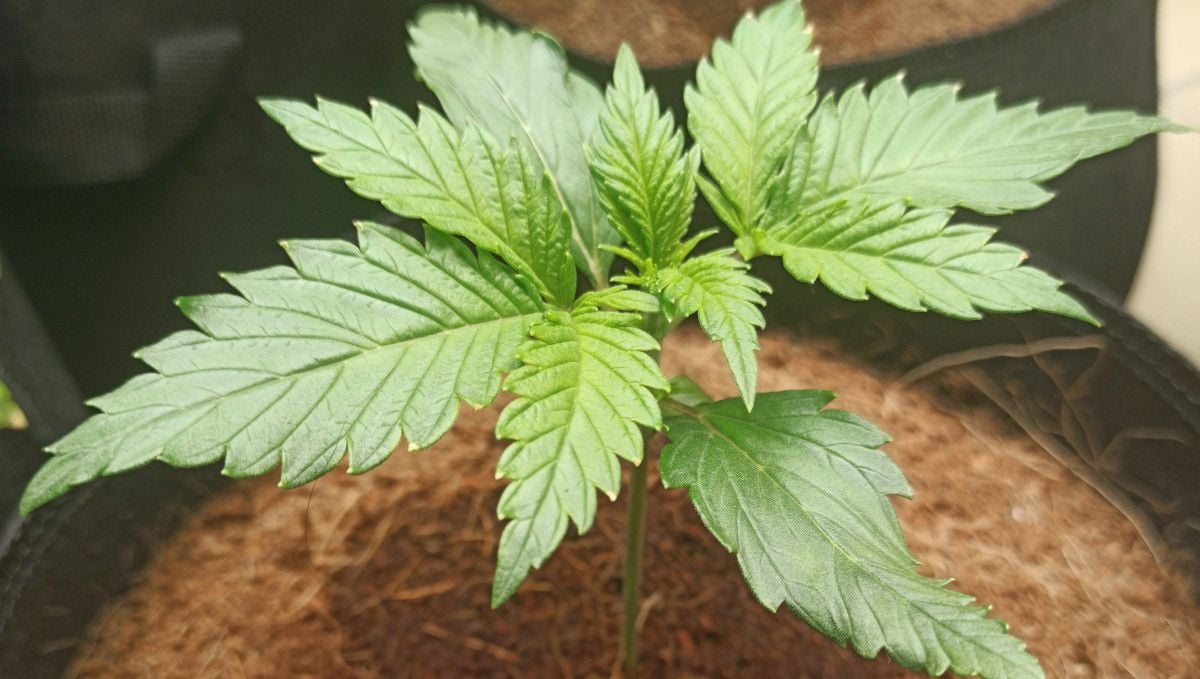
But at some point, the development becomes noticeable “upstairs” too. You will see some new growth at the nodes (which are the places where petioles of fan leaves attach to the main stalk). This new growth is future side branches, and once they start to develop, the progress becomes very rapid.
Naturally, this is the perfect time to start low-stress training (LST) your cannabis. LST means basically tying down the tallest branches. By doing this, you not only direct the growth horizontally but, more importantly, stimulate the side growth. It results in a bushier plant with a greater number of future bud sites.

5. Mid Veg | Weeks 4-5
Over the last two weeks of the vegetative stage, the grower steadily upped the doses of nutrients while keeping everything else unchanged.
| Plant Height: | 5-8“ (13-20 cm) | Humidity: | 60% |
|---|---|---|---|
| Distance to Light: | 23.6“ (60 cm) | Water per Day: | 0.13 gal (0.5 l) |
| Day Temp: | 75°F (24°C) | pH: | 6.2 |
| Night Temp: | 66°F (19°C) | TDS: | 450-500 ppm |
In the later part of veg, about one month from seed, healthy cannabis demonstrates explosive growth—when every day brings new changes in the overall height and girth and the thickness of foliage. This can be an issue indoors—if your setup doesn't have enough vertical space. And this is just another reason to train the hell out of your autoflower to make it nice and short.
In this particular life cycle, the grower easily achieved this goal with the simple tie-down method.
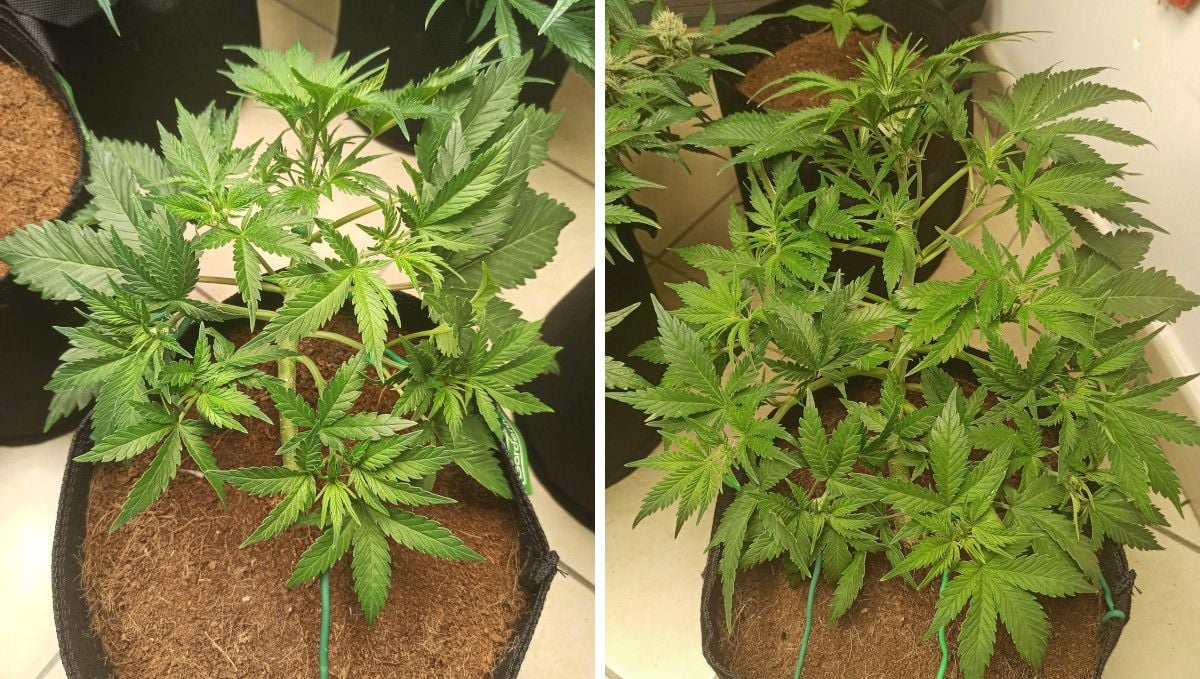
In the vegetative phase, cannabis needs a nitrogen-rich diet while the other two macronutrients—phosphorus (P) and potassium (K)—play only a minor role. For this Afghan Kush Auto, the main source of nutrients was the 2-component pH Perfect Sensi Coco Grow formula, and here’s the complete schedule for weeks 1 through 5.
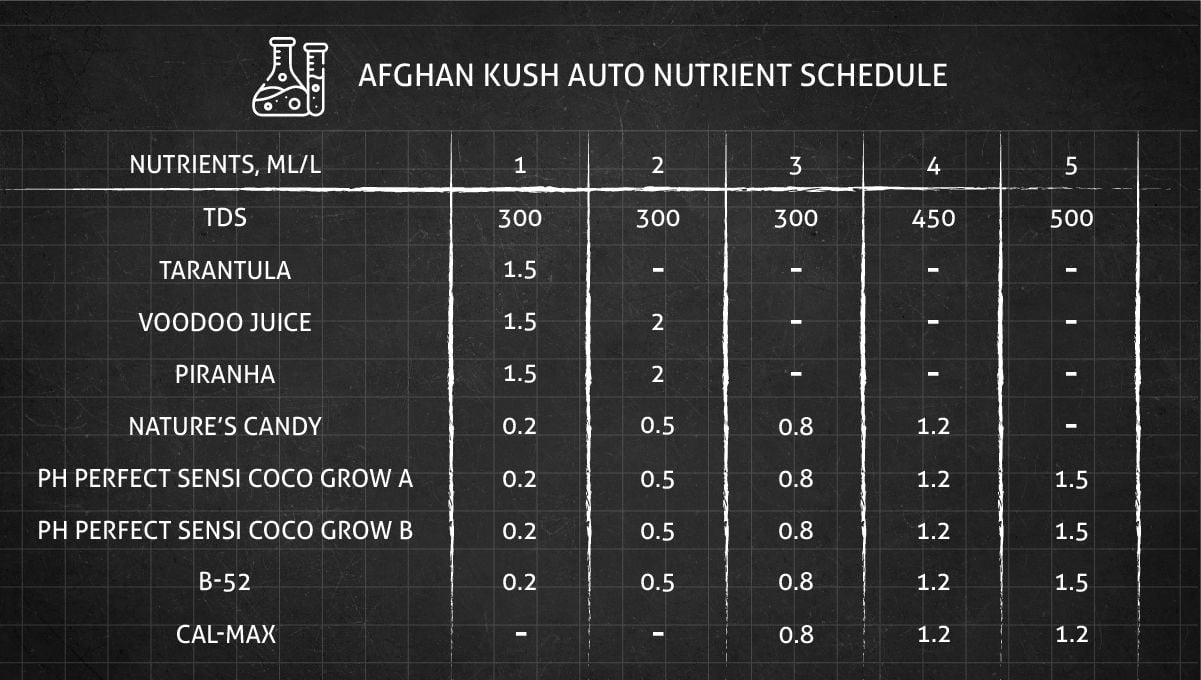
The first three in the list are the inoculants meant to colonize the medium with beneficial microbial life. Nature’s Candy is food for microbes, serving them a rich meal of amino acids and carbohydrates (sugars). B-52 (a seaweed kelp extract) stimulates the growth of roots and stems, and Cal-Max is essential for the cultivation in coco because otherwise your grow will be plagued with calcium and magnesium deficiencies.
6. Transition (Pre-Flower) | Week 6
By the end of the vegetative stage, cannabis has an extensive root structure that can well handle higher doses of nutrients. So the grower raised his TDS readings to 900 ppm. You can feed your cannabis each time you water or alternate giving it nutrient solution and fresh water. The latter method works best in soil, the former in coco. Just watch the leaves and make sure they’re neither yellowish (hungry) nor burnt at the tips (overfed).
| Plant Height: | 8“ (20 cm) | Humidity: | 60% |
|---|---|---|---|
| Distance to Light: | 23.6“ (60 cm) | Water per Day: | 0.2 gal (0.75 l) |
| Day Temp: | 75°F (24°C) | pH: | 6.2 |
| Night Temp: | 66°F (19°C) | TDS: | 900 ppm |
The grower marked week 6 as the first of the flowering stage. It would be more correct to call this period in the timeline pre-flowering stage. This is when you notice that the smallest leaves on top begin to look thread-like and a bit on the yellow side compared to the deeper green further down. Don’t worry, it’s perfectly normal. Next, you’ll see a lot of white hairs (pistils) appear on every top. This is the first sign of future buds.
At the beginning of cannabis flowering stages, the upward growth continues or even picks up pace. We call it the flowering stretch. It might catch you off guard as you can quickly run out of vertical space. To avoid this with autoflowers, use smaller pots.
This was hardly an issue with Afghan Kush Auto because the strain is short by nature. If anything, the grower actually hoped she would stretch much bigger before she reached her final height. He even worried a little that she was so small, and he didn’t feed her as much as other autoflowers of the same age.
Anyway, the girl looked gorgeous—to the point that the guy decided some defoliation might do her good. But he defoliated only sparingly—to let the light penetrate all the way down to the lower bud sites.
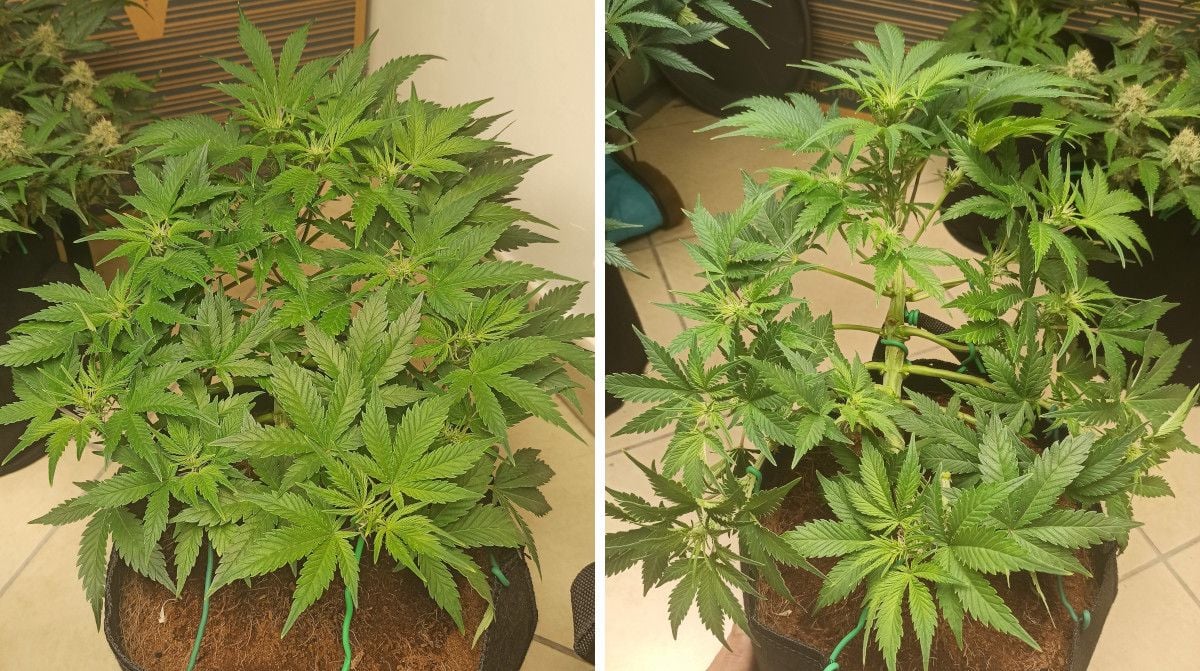
7. Early Flower | Weeks 7-8
In the early part of the flowering stage, cannabis finally begins to form flowers. At first, they are nothing more than a fluffy bunch of pistils on top, but they already begin to smell. If you haven’t yet installed a carbon filter, now it’s time to do it. You can also start lowering the temperature a couple of degrees compared to the vegetative stage and, more importantly, decreasing the relative humidity to something like 35-45%. With higher RH, you risk problems with mold and bud rot.
| Plant Height: | 8-14“ (20-35 cm) | Humidity: | 60% |
|---|---|---|---|
| Distance to Light: | 23.6-16“ (60-40 cm) | Water per Day: | 0.2 gal (0.75 l) |
| Day Temp: | 75°F (24°C) | pH: | 6.2 |
| Night Temp: | 66°F (19°C) | TDS: | 900 ppm |
Of course, the flowering stretch also continues during this period, but in this instance, the grower was nervous about Afghan Kush Auto remaining so small. Mind you that he was growing the seed as a tester, without knowing what strain it was. If he knew, he’d understand that this was simply a short-statured variety, priceless for smaller setups. In the height chart below, you can see how compact Afghan Kush Auto is.
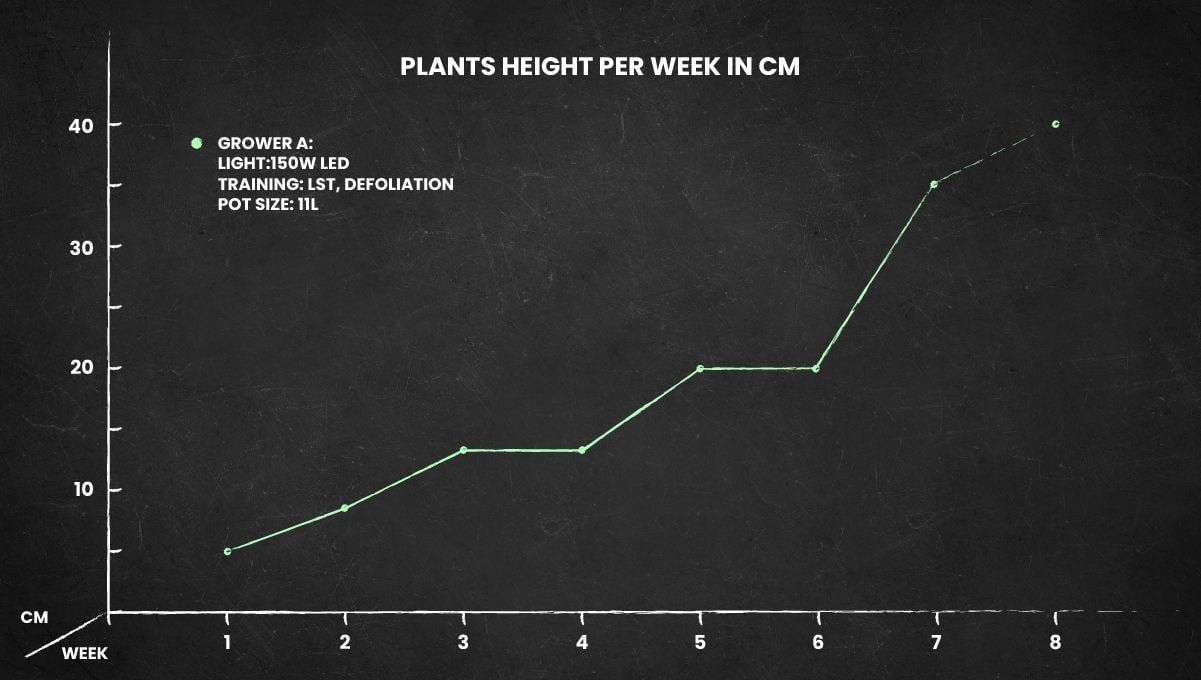
Anyway, the forming buds looked promising, and the small leaves sticking out of them were now covered with the first signs of “sugar”.
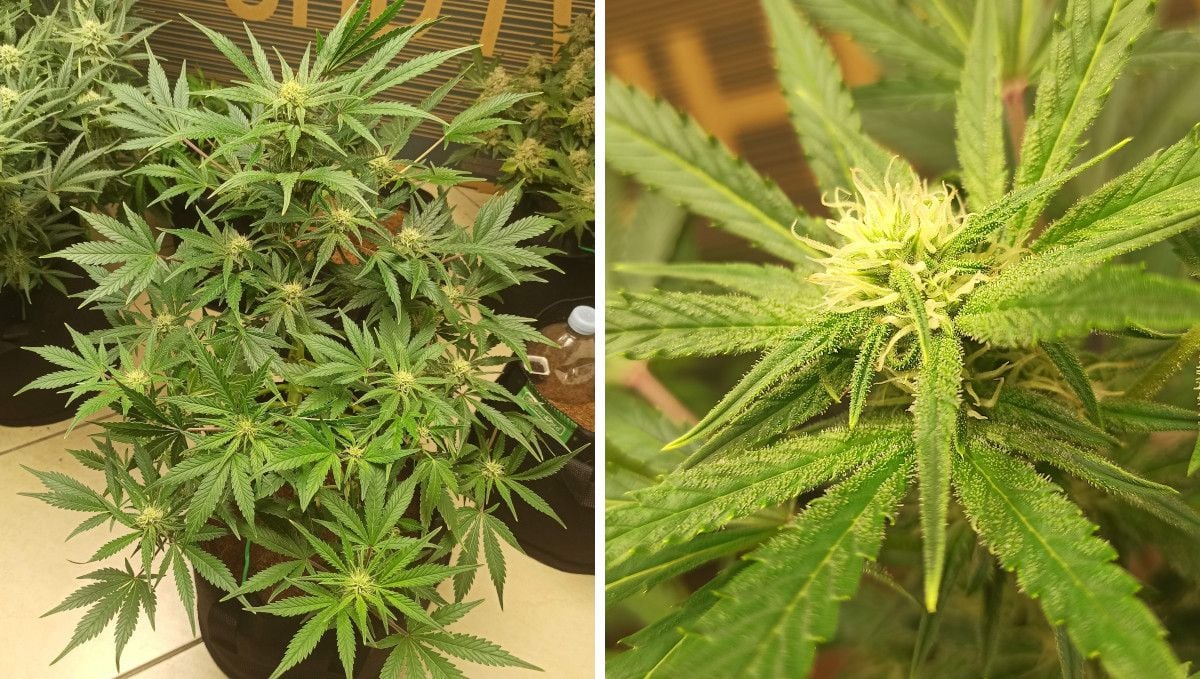
Of course, the beginning of flowering called for the change in diet. The grower gave his Auto Afghan Kush a second helping of Voodoo Juice, Piranha, and Bud Ignitor—just to replenish beneficial microbes in the medium.
He also replaced the main growing nutrient with a flowering one—pH Perfect Sensi Coco Bloom, parts A and B. Obviously, you don’t have to use this very line of nutrients in your garden, but make sure you give your ladies something with more phosphorus (P) and potassium (K) in it once they’ve started flowering. The nitrogen (N) at this stage is of lesser value, and its excess can even interfere with flowering.
The whole feeding schedule from the pre-flowering to the harvest is in the table below. Please bear in mind that most supplements in the list—from Bud Ignitor to Overdrive—contain raised amounts of P and K in different proportions to suit the slightly varying needs of different autoflower flowering stages. Except for Sensizym (which is a brew of organic catalysts called enzymes) and Rhino Skin, a source of silicon to make cell walls harder and stems and branches more robust.
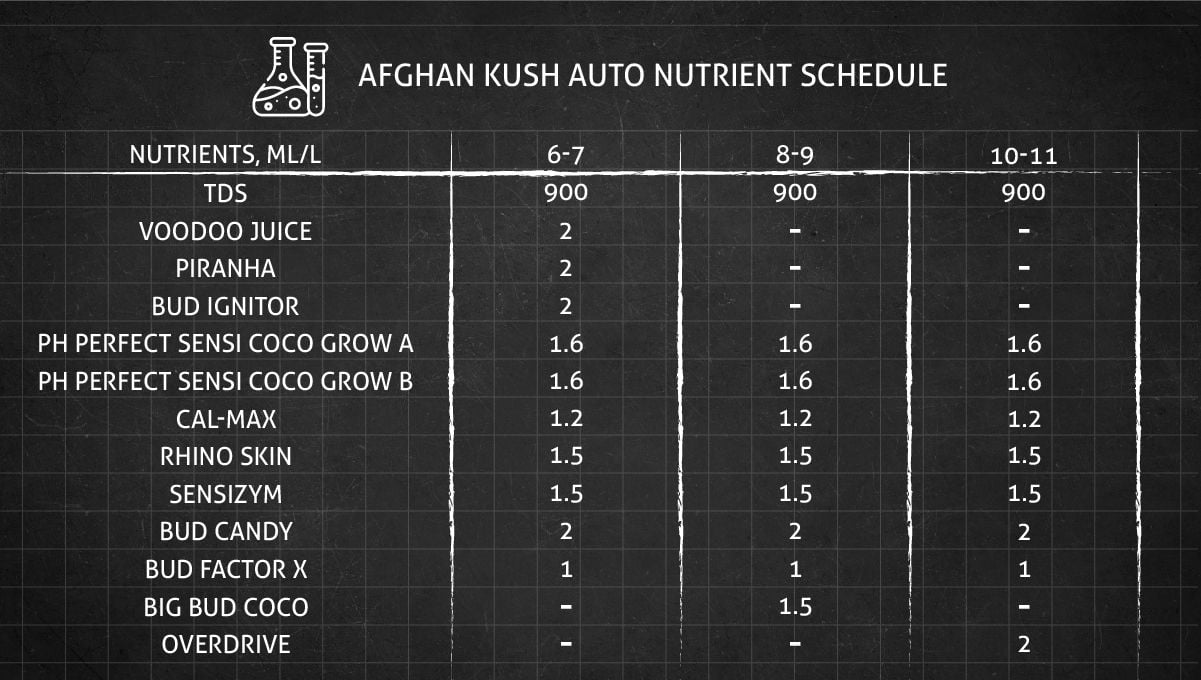
8. Mid Flower (Bulk Phase) | Weeks 9-10
The Afghan Kush Auto in this report stopped stretching at 40 cm (16 inches). It was the most compact plant in the garden, and the grower thought it would be a good idea to feed her a bit less than others—900 ppm instead of 1000.
| Plant Height: | 16“ (40 cm) | Humidity: | 60% |
|---|---|---|---|
| Distance to Light: | 16“ (40 cm) | Water per Day: | 0.2 gal (0.75 l) |
| Day Temp: | 75°F (24°C) | pH: | 6.2 |
| Night Temp: | 66°F (19°C) | TDS: | 900 ppm |
The grower was happy with the way buds were developing on his Afghan Kush Auto. They were filling out nicely, and 4 weeks into flowering, the interesting gassy and fruity smell became quite intense. Later, it changed to a mostly sour aroma.
As you can see in the photo below, the colas already looked quite solid but far from mature. It’s obvious even with a naked eye because practically all of the hairs covering the buds were still white. An impatient gardener may harvest them this early, but the smoke won’t be very potent yet. Besides, it will be mostly felt in the head and won’t produce that warm and fuzzy body buzz that Indica fans enjoy.

9. Ripening And Harvest | Week 11
By week 11, the grower stopped worrying about Afghan Kush Auto yielding small. It was now evident that despite its compact size, the lady would bring a respectable final haul of super solid and sticky goodness.
| Plant Height: | 16-18“ (40-45 cm) | Humidity: | 60% |
|---|---|---|---|
| Distance to Light: | 16“ (40 cm) | Water per Day: | 0.2 gal (0.75 l) |
| Day Temp: | 75°F (24°C) | pH: | 6.2 |
| Night Temp: | 66°F (19°C) | TDS: | 900↘150 ppm |
Though the plant was quickly approaching harvest, she was still being fed full doses of nutrients, most notably Overdrive. This flowering supplement contains a lot of P and K but also magnesium (Mg) and just a bit of N to not lose momentum just before the harvest.
The grower got so carried away with feeding that he only had a couple of days to flush his girl. Usually, proper flushing requires more time: up to two weeks in soil and a full week in a soilless medium like coco coir. But in this case Afghan Kush Auto had been getting less food than usual, so a shorter flush was probably enough. Besides, the guy didn’t use plain water but Advanced Nutrients Flawless Finish. This formula probably acts much quicker to rid the medium and plant tissues of built-up salts.

After full eleven weeks, Afghan Kush Auto looked incredible. She was still small but with huge and insanely resinous colas.
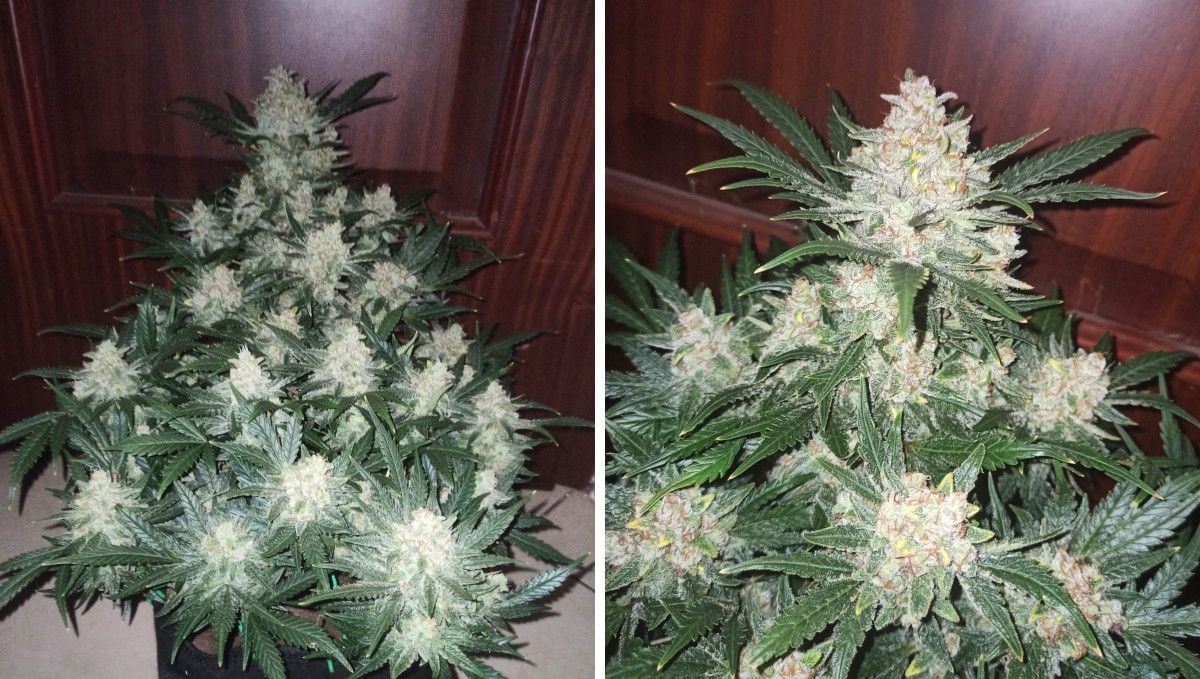
10. Yield and Smoke Report
All the yield estimates that the grower had done throughout his Afghan Kush Auto life cycle proved to be wrong. In the end, he harvested much more than he had expected—2.19 oz (62 g) of tightly manicured premium bud.

The grower was so happy with the quality of Afghan Kush buds that he couldn’t but smoke two-thirds before he was done with the curing. We recommend being more patient and drying your harvest slowly over one week and then curing the buds in glass jars for 2-3 more weeks. This will ensure top-notch quality.
Anyway, even after a rushed cure, Afghan Kush Auto was fire. The smoke was super strong, with a hybrid high that hit both your mind and your body at once. In this case, the effect even had more Sativa side to it although the strain is almost pure Indica.
As for the smell and taste, it was exactly the same—gassy and sour—as the grower noted in the flowering stage.
completely cured now and the taste is super a sour and flowery when inhaling with very sweet tones and the smell is outrageous too very gassy and sour i truly love it..
JohnnyBlaze
11. Afghan Kush Auto Cannabis Strain Grow Guide FAQs
So there you have it. Our complete, top to bottom grow guide for the everlasting Afghan Kush strain. But, no matter how deep we dive into a particular cultivar, there will always be some lingering questions, especially from you guys out there still new to the game. Let's quickly dive into the most frequently asked questions to do with growing Afgahn Kush Auto, and see if we can provide some simple, straightforward answers that will get you on your way!
How long does it typically take Afghan Kush Auto to go from germination to harvest?
The most commonly asked question, no matter the strain. And one of the hardest to give an answer to. There are a bunch of external factors that affect the length of a grow, but thanks to the autoflowering genetics that underpin Afghan Kush Auto, it should never take longer than about 63 days. If you are able to provide your plants with truly optimal conditions, that number may come down to as low as 55 days or so, but this is only really possible with the perfect temps and humidity throughout the entire grow, and optimal lighting and CO2 conditions.
When growing outdoors, expect Afghan Kush Auto to take a little longer. Keep in mind that all strains come with some variation between phenotypes. While we take huge pride in the genetic stability of our seeds here at Fast Buds, there is always a small chance that 2 seeds from the same batch may react a little differently to the exact same conditions. Never assume that just because one plant is ready for the final chop, all the rest of the plants from the same crop are also ready to come down.
How will I know when my plants are ready for harvest?
The only way to truly tell if your plants are ready for harvest is to keep a keen eye on each and every one. Trichomes go through four distinct stages of maturity, and it's by observing these that we tell when the plants are ready. these three stages are
- Clear, or translucent.
- Cloudy, or milky
- Amber
- Brown
If you don't already have one, grab a portable USB microscope. Trichomes are simply too minuscule to view properly with the naked eye, and so you'll need one of these to really tell what's going on. Most cultivators chop when there is a 70/30 mix of cloudy to amber trichomes.
What sort of effects can I expect from Afghan Kush Auto?
With a genetic split of Sativa 15%/Indica 85%, it comes as no huge surprise that this strain is a bit of a heavy hitter. If you are looking for a strain that offers heavy sedation, and huge increases in appetite then your search is over. Afghan Kush Auto is also known for its medical benefits. If you are suffering from anything from stress and anxiety to chronic pain and inflammation, then this strain should be right up your alley.
Are there any growing tips for Afghan Kush Auto?
Afghan Kush is a super resilient hybrid and a perfect choice for people looking for a strain to grow outdoors in challenging climates. She is anything but picky, and while you will always get the best results when feeding optimally and in perfect conditions, you can expect Afghan Kush to do really well with little care and in warmer that perfect climates.
Thanks to the heavy Indica dominance, Afghan Kush Auto grows short and stocky (rarely tipping the 1-meter mark), making this strain perfect for growing in a Sea of Green setup. If you live in a state where you can grow a large number of plants legally and are looking for a strain that offers a super fast turnaround then here she is!
How big of a yield can I expect from each plant?
Again, that all depends on how you treat the plants during their growth. Afghan Kush, like most Indica dominant autos, doesn't like to be heavily stressed - but a bit of LST (Low-Stress Training) can work wonders here. By using the tie-down method, you can really open up the structure of the plant and allow for much deeper light penetration at the budding sites and lets much more airflow throughout the canopy. In terms of numbers, you can expect anywhere from one to two ounces of each plant when grown in non-deal conditions, or up to 4 per plant when grown in a perfect, grow room setting.
How heavy of a feed schedule should I be giving my Afghan Kush auto crop?
This depends on your style of cultivation, but as is the case with most autoflowering strains, Afghan Kush Auto flourishes with a slightly lighter nutrient dose when compared to her photo-period kin. If you opt for a soil-based medium, then you can let the microbes do all the work for you and just feed pure water in a 6.0 to 7.0 pH range.
If you are growing in coco or hydro then we always recommend starting out light with 1/2 of the bottle dosage and seeing how the plants respond. It is much easier to fix plants that have received a little less feed than ones that have been supplied with a nutrient solution that is much too heavy. Oh and keep the pH range between 5.8 to 6.2 for the best results with hydro or coco.
What is the best pot type and volume for Afghan Kush Auto?
For the most part, we usually recommend using an eleven-liter pot or larger for auto strains. This ensures there is enough room for the root system to grow and develop, while also avoiding the risk of overcrowding.If you are growing in a space-challenged situation then a seven-liter pot can certainly do the trick - just be aware that you may experience a slight reduction in yields compared to planting in larger pots.
Additionally, if you plan on running a Sea Of Green crop then you can go with seven or eight-liter pots and just compensate with extra plants. And for pot type, you just can't beat fabric smart pots. They offer far better root zone oxygenation and drainage than traditional plastic or terracotta pots and keep the temperature much better regulated than other options.
What are the dominant terpenes in Afghan Kush Auto?
Afghan Kush is rich in humulene, myrcene, and caryophyllene. This combination offers a super earthy, piney, and herbal mix that is a throwback to those 90s classics that those old enough to remember will pick out straight away. There are also nice soft hints of citrus and a slightly sweet, candy-like aroma in the mix as well.
12. In Conclusion
The defining characteristic of Afghan Kush Auto is her small size. You’ll appreciate this feature if you grow in a small tent or want to conceal your garden behind some other vegetation outdoors. Just keep in mind that the smell isn’t so inconspicuous.
You’ll be delighted that a tiny baby like this can produce so much bud. And that the stuff is so high-quality: very hashy in an old-school way, like an almost pure Afghani should be. Another huge advantage of this classic is the short time she needs to complete her journey from seed to harvest. And last but not least, you’ll appreciate the strain’s cold resistance, her tolerance of subpar conditions, and her perfect low-maintenance.
External References
- Cannabis sativa terpenes are cannabimimetic and selectively enhance cannabinoid activity, Scientific Reports, 15 April 2021
- Known Unknowns and Unknown Knowns: What we know about the cannabis and the Hashish trade in Afghanistan, EchoGeo, July 2019









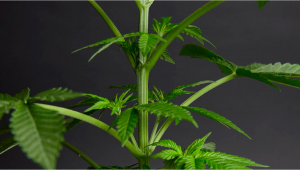

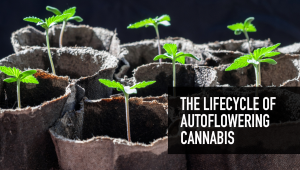
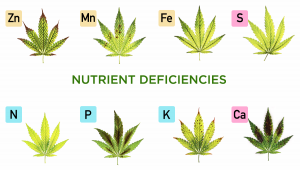
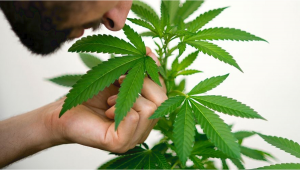




Comments